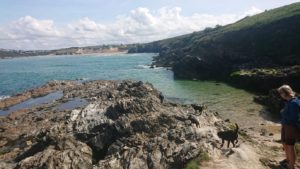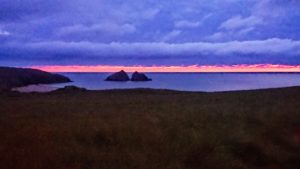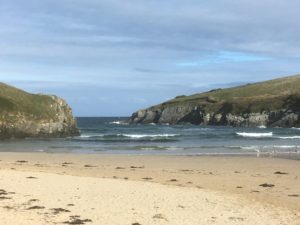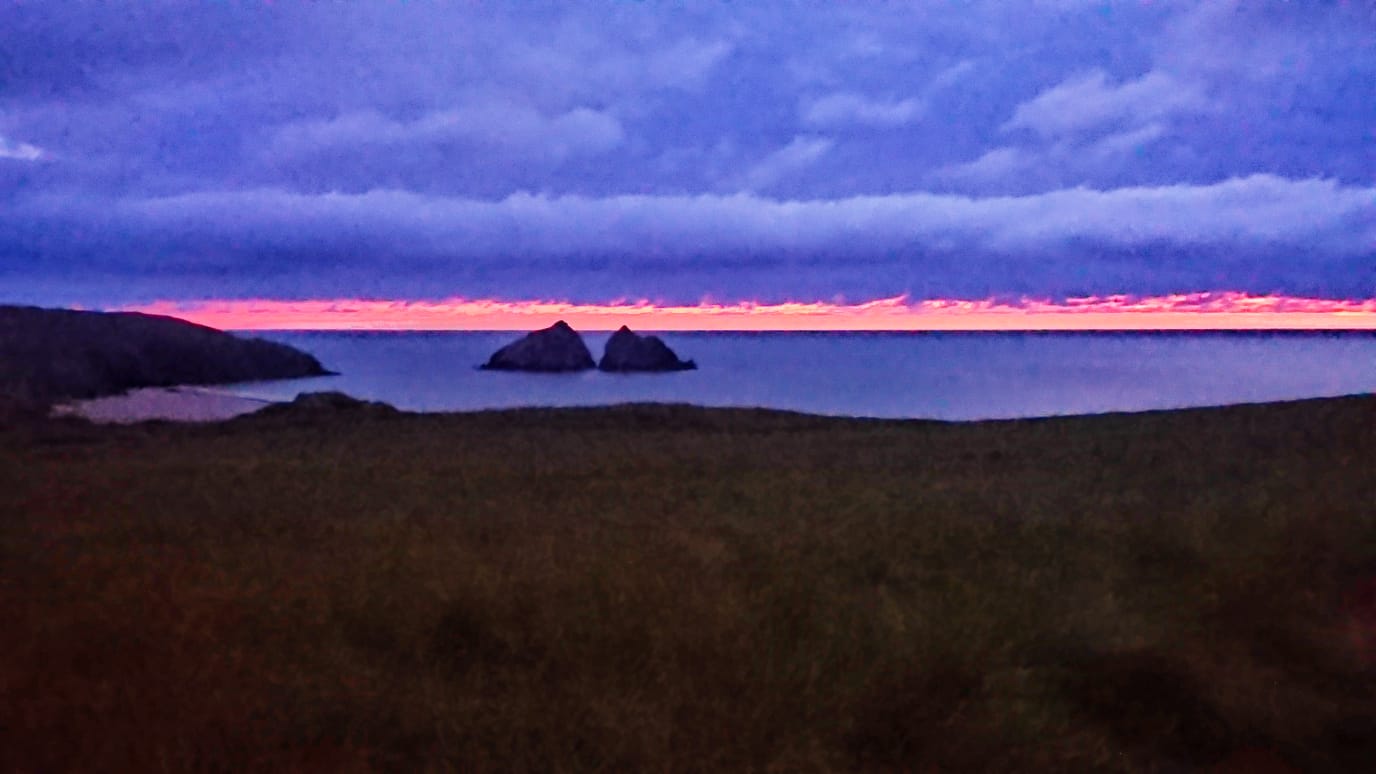03 October 2019
Blue Health
Not the Blues.
By Lynda Goetz
 Many years ago whilst at university, I remember penning a poem I think I called ‘Not the Blues’. Why, I wondered, was a low mood or depression called ’the blues’? Shouldn’t it have been called ‘the greys’? Grey, after all, is the colour, certainly in this country, we associate with sadness: grey skies; grey days; grey seas; rain; drab cities; grey, uninspiring concrete buildings on days without sunshine or blue skies. The explanation, it seems, (now that instant access to information is so easily available via the internet) is that the American music which gave rise to the term ‘probably originated with the 17th-century English expression “the blue devils,” for the intense visual hallucinations that can accompany severe alcohol withdrawal.’ So much for ‘the blues’.
Many years ago whilst at university, I remember penning a poem I think I called ‘Not the Blues’. Why, I wondered, was a low mood or depression called ’the blues’? Shouldn’t it have been called ‘the greys’? Grey, after all, is the colour, certainly in this country, we associate with sadness: grey skies; grey days; grey seas; rain; drab cities; grey, uninspiring concrete buildings on days without sunshine or blue skies. The explanation, it seems, (now that instant access to information is so easily available via the internet) is that the American music which gave rise to the term ‘probably originated with the 17th-century English expression “the blue devils,” for the intense visual hallucinations that can accompany severe alcohol withdrawal.’ So much for ‘the blues’.
Nowadays, however, it seems that we might actually be recognising the benefits of ‘blue’, but until this week, I had never heard of the term ‘Blue Health’; the description which has been adopted by the team investigating the links between environment, health and well-being. The European Centre for Environment and Human Health, based at The University of Exeter’s Truro campus and part of the Medical School, was set up in 2011 with support from Horizon 2020, an EU funded research and innovation project. Exeter works in cooperation with experts across Europe to systematically explore the impact that living on the coast or near inland lakes or waterways might have on physical health and mental well-being.

On Tuesday this week the Blue Health paper ‘Coastal Proximity and Mental Health’ was published and received some attention in the national and local press and media. Until relatively recently, research has supported the view that there is a positive association between exposure to green space and mental health, but there has been no research into the correlation between access to blue space (aquatic environments such as coast, waterways or lakes) and mental health. The report published this week relates only to coastal space, but research is ongoing with regard to other blue spaces. Interestingly, it concludes that those adults in the lowest income bracket living in urban environments within 5km of the coast were more likely to have better mental health than those in similar environments residing over 50km from the sea. For those outside the lowest income brackets living within 1km of the coast means they are 22 per cent less likely to have symptoms of mental health disorder. This rises to 40% amongst those in the lowest income brackets. (Presumably those urban dwellers who are not amongst the poorest are more likely to have other outlets for an ‘escape’ from their environment).
Dr Jo Garrett, who led the study, said, “Our research suggests for the first time that people in poorer households living closer to the coast experience fewer symptoms of mental health disorders… this ‘protective’ zone could play a useful role in helping to level the playing field between those on high and those on low incomes”. As little as a couple of hours a week of exposure to ‘blue’ spaces can make a difference to people. Less than that does not give the same benefits. It apparently does not matter what sort of interaction one has with this natural environment; it can be anything from a physical involvement such as swimming to simply sitting on a bench and gazing out at the ocean. Dr Mathew Wright, part of the Blue Health team at Exeter University, added that “We need to help policy makers understand how to maximise the well-being benefits of ‘blue’ spaces in towns and cities and ensure that access is fair and inclusive for everyone, while not damaging our fragile coastal environments.”
 Fragile coastal environments were the other maritime story of the week as Sir David Attenborough launched the Help our Kelp campaign. In the first marine ‘rewilding’ initiative, the campaign hopes to restore the underwater kelp forest off the Sussex coast, which has disappeared in the last 40 years. Sir David pointed out that the kelp forest is ‘critical habitat that is key for nursery grounds, for water quality and storing carbon.’ As Sarah Ward, the living seas officer for the Sussex Wildlife Trust explained, “Kelp forests can absorb and lock up carbon just as effectively as woodland, if not more so and we’re able to create this habitat on a scale that simply couldn’t be recreated on land. This will be a huge step forward in addressing the escalating climate crisis.” In a film made in conjunction with the campaign, Blue Marine Foundation’s head of science, Dr Ian Hendy, pointed out that globally kelp forests absorb 600 million tons of carbon; roughly twice the amount the UK emits per year.
Fragile coastal environments were the other maritime story of the week as Sir David Attenborough launched the Help our Kelp campaign. In the first marine ‘rewilding’ initiative, the campaign hopes to restore the underwater kelp forest off the Sussex coast, which has disappeared in the last 40 years. Sir David pointed out that the kelp forest is ‘critical habitat that is key for nursery grounds, for water quality and storing carbon.’ As Sarah Ward, the living seas officer for the Sussex Wildlife Trust explained, “Kelp forests can absorb and lock up carbon just as effectively as woodland, if not more so and we’re able to create this habitat on a scale that simply couldn’t be recreated on land. This will be a huge step forward in addressing the escalating climate crisis.” In a film made in conjunction with the campaign, Blue Marine Foundation’s head of science, Dr Ian Hendy, pointed out that globally kelp forests absorb 600 million tons of carbon; roughly twice the amount the UK emits per year.
 A figure for the total amount of carbon on earth was also revealed this week by scientists from the Deep Carbon Observatory project, who estimated it to be 1.85 billion, billion tonnes, after 10 years of research and calculations. Fortunately for those who are worried about climate change, over 90% of this is contained in the interior of the Earth, in the crust, the mantle and the core; so that the amount we are concerned about for climate change is only a tiny fraction of the planet’s total carbon. Having worked out where the carbon is held and in what form and how it moves through the Earth system will help understand the limits of life on our planet and in the forecasting of volcanic eruptions.
A figure for the total amount of carbon on earth was also revealed this week by scientists from the Deep Carbon Observatory project, who estimated it to be 1.85 billion, billion tonnes, after 10 years of research and calculations. Fortunately for those who are worried about climate change, over 90% of this is contained in the interior of the Earth, in the crust, the mantle and the core; so that the amount we are concerned about for climate change is only a tiny fraction of the planet’s total carbon. Having worked out where the carbon is held and in what form and how it moves through the Earth system will help understand the limits of life on our planet and in the forecasting of volcanic eruptions.
So, quite an interesting week for science, and something to focus on other than the reds, oranges and blues of the political world, where needless to say, it is almost impossible to say what progress, if any, has been made this week.


